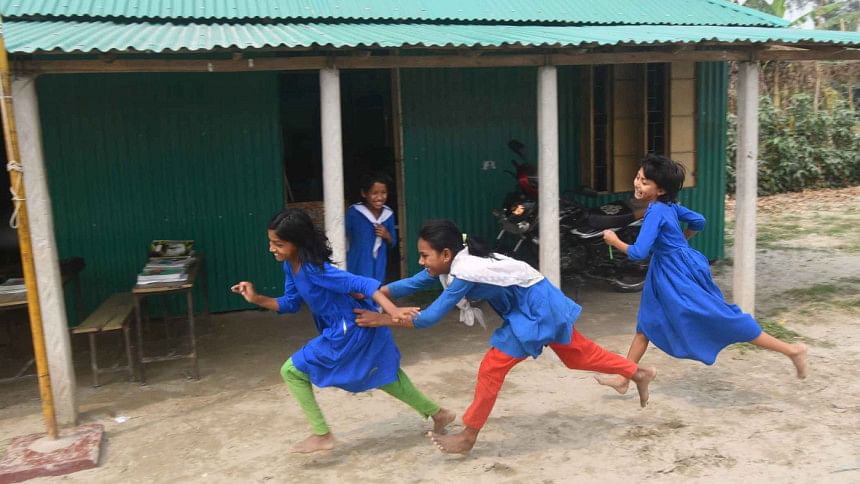Why is our public spending on education still so shockingly low?

Since it boosts individual productivity and produces a trained labour force, education is seen as a crucial road to economic progress. However, in most countries, there are clear examples of market failure when it comes to education since, in a free market, education is under-consumed. High market prices of education can prevent individuals from investing in human capital. In this situation, the government's role in allocating resources to education is vital in making up for the failure of markets to support education.
The Sustainable Development Goals (SDG 4) highlights the importance of ensuring inclusive and equitable quality education and promoting lifelong learning opportunities for all. The 8th Five Year Plan of Bangladesh aims to achieve an 8.5 percent growth rate in GDP by 2025. Also, the country is eyeing the possibility of meeting the SDGs' stiff targets by 2030, aspiring to become an upper-middle income country by 2031, and a developed country by 2041. The success of achieving these goals in Bangladesh critically hinges on the allocation of a substantial amount of public resources to education and its efficient use. However, there are genuine concerns that the current education system in Bangladesh is unable to help in meeting most of these targets.
Where does Bangladesh stand? Even though there has been considerable progress in gross enrolment in primary education, the country is seriously lagging in ensuring quality education for all. If we consider the average years of schooling as an indication of the status of education in any country, in 2019, the average years of schooling in Bangladesh was only 6.2. This was higher than Pakistan (5.2) but lower than India (6.5), and Bangladesh was far behind Sri Lanka (10.6) and Southeast Asian countries like Malaysia (10.4), Vietnam (8.3), Indonesia (8.2), and Thailand (7.9).
Bangladesh had been enjoying macroeconomic stability for a long time in terms of sustained and rising economic growth and keeping the budget deficit at around five percent of GDP. However, this success has come at the cost of very low spending on education. Regrettably, Bangladesh has one of the lowest ratios of public expenditure on education to GDP – less than two percent. This is much lower than the averages for LDCs (above three percent), lower-middle-income countries (above four percent), upper-middle-income countries (above four percent), and high-income countries (above five percent). Bangladesh's public expenditure on education to GDP ratio is even lower than the South Asian average.
There are two specific reasons behind the shockingly low ratio of public expenditure on education to GDP. First, the country has weak state capacity in mobilising tax revenues and thus has insufficient public resources for education. Inefficient tax infrastructure, complex tax laws, poor coverage and corruption are the main causes of low tax collection. Second, even with the low tax-GDP ratio, the country suffers from the problem of not getting its priorities right when it comes to the allocation of public resources for education. Also, due to corrupt practices, a large part of whatever is spent by the government on education doesn't reach the targeted beneficiaries. There are also regional disparities in the allocation of public resources for education. In a system of crony capitalism and a high degree of rent-seeking activities, human development and human capital formation fail to get their deserved priorities.
Another huge setback is the fact that the education sector in Bangladesh has a stable anti-reform coalition among dominant actors, which results in a policy paralysis. This can be described as a situation where critically important and necessary laws and reforms are not undertaken or, even if undertaken, not implemented as a result of a lack of commitment from the government or the inability of dominant actors to reach a consensus over the nature of the reform. The policy paralysis is observed through the continued staggeringly low public spending on education, lack of education reforms, high prevalence of mismanagement, corruption, and lack of accountability and transparency.
Bangladesh has a pluralistic education system that is not properly regulated, and consists of different actors with different interests and degrees of power or influence. There is a strong incentive to maintain the status quo where the generation of rents/privileges from the existing system and distribution of such rents/privileges among the influential actors, who have the least interest in reform, perpetuates the so-called stable anti-reform coalition. Thus, political will is a must to break this stable anti-reform coalition and get rid of the policy paralysis.
Vietnam, which showed strong political commitment to education for all, is an interesting example here. Vietnam's economic transition since the Doi Moi reforms has been extraordinarily effective, leading to one of the fastest economic growth rates in the world. Since the beginning, education has been a key element of reform. They understood that for an economy to prosper, its people must have the necessary education, training and skills to support business and prosperity. As a result, since the late 1990s, the government has allocated between 15 and 20 percent of its entire budget to education. The ratio of public expenditure on education to GDP in Vietnam has been more than four percent throughout the last two decades.
However, it is not only the high public spending on education. Critical reforms in the education system also helped Vietnam achieve rapid development in human capital. The country made significant progress in universal primary education, gender equality and adult literacy under the first Education for All (EFA) action plan. The second EFA plan built upon this progress by putting more emphasis on quality than quantity, universal lower-secondary education, lifelong learning, and the enhancement of educational management and resource allocation. Bangladesh can learn from these experiences and take the decision to prioritise education in the same way.
Dr Selim Raihan is a professor at the Department of Economics of the University of Dhaka, and executive director at the South Asian Network on Economic Modeling (Sanem).

 For all latest news, follow The Daily Star's Google News channel.
For all latest news, follow The Daily Star's Google News channel. 








Comments